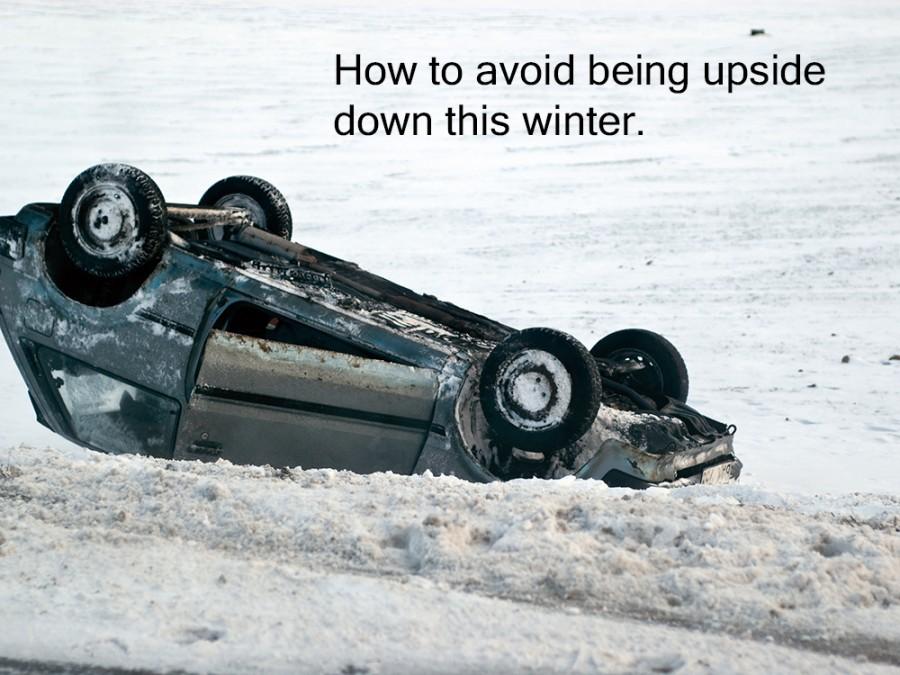Winter Driving Tips
Photo by Djonk – Fotolia
Winter is a car’s worst nightmare. The sub-freezing temperatures can wreak havoc on many key mechanical parts, snow and ice turn the tires into an ice skating rink, and the salt put onto roads does its best to rip holes into the exterior of the car. Winter isn’t kind to cars or people, most everyone seems to become a sliding maniac when they hit the first patch of ice on the road. So, to keep yourself out of the nearest parked car or other stationary object, take these tips into consideration the next time you start your car this winter.
- Make sure your car is mechanically sound.
In summer, very few problems can show up with a car. Brakes work perfectly, it fires up on the first or second cranka�� there’s no reason it won’t do the same in winter, right? Wrong. Like I said before, winter is a car’s worst nightmare. Any small problem with a vehicle in the summer could be the difference between stopping, starting, or surviving in winter. That being said, it is a good idea to take the car in for a tune-up, make sure that all the fluids are filled adequately (and with high-quality fluids, that cheap antifreeze and $2.99 wiper fluid at the gas station usually freezes as soon as the thermometer dips below 32 degrees.) Also, make sure that your tires are inflated with the correct amount of air. The pressure within the tires typically drops by around 1 psi per every 10Es F, so those tires that were at a perfect 28 psi in September are now sitting at an appalling 25 or 24 psi in January. Proper pressure could be the difference between stopping in 50 feet and slamming into that bus of freshmen in the parking lot.
- Get gas!
Like every frugal teenager at Battle, I try and stretch every tank of gas as far as it can go. That usually means I end up rolling into the gas station on fumes, and every mile after the fuel light comes on is a guessing game. That strategy doesn’t quite work as well in winter. Because everything is so cold, metal has contracted within your car’s engine, and fuel lines are at a higher risk of freezing with fuel still in them. By maintaining (gasp!) more than a half tank of fuel during the winter, you can stave off poor starting in the mornings. Plus, when your car ends up in a snow bank after you got too confident in the exit from Hyvee, you can keep warm for as long as the fuel lastsa��or until your parents arrive.
- Store some supplies in the trunk.
While some of us may keep a plethora of clothes, shoes, and other miscellaneous items in our cars, no matter how many t-shirts you don the wind chill of minus twenty will still be cold. That being said, you may want to invest in a blanket to store in the car, along with a stash of other warm clothes. Although it might seem silly, a small stash of snacks and a roadside emergency kit may also be a good decision. You may never use any of these items, but when your car is stuck in a blizzard and you are stranded, flares, a phone, and Funyuns will be your savior.
- Let your car heat up!
You know that little gauge on your dash, the one with an H and a C, and the little thermometer? That one you’ve never looked at until there is steam pouring out from under your hood? You know the one. That little gauge is like the heart monitor for a car. It tells how hot, or how cold, the coolant inside the engine is, and that difference matters a lot in winter. In the summer, the enemy for a car is overheating; and in winter it is being too cold. After sitting overnight on the street, the oil drains from the engine and back into the pan, and the coolant stops circulating through the engine. When you start it up in the morning (and this is especially true for older vehicles), you should give it two or three minutes to get the oil and coolant flowing around the engine. After that, don’t just floor it out of the driveway; give it some time to come to operating temperature so that the metal expands properly and doesn’t become damaged.
- Drive carefully, don’t pretend to be a rally driver.*
While I am a major fan of motorsport, I also understand that public roads are no place for ripping around at 90 miles per hour, especially on ice. As Click and Clack from the famous radio show Car Talk said, “drive like there are eggshells on the bottom of your feet.” Don’t break those eggshells! Feather the gas and the brake, and remember that ice greatly reduces the friction and contact patch of a tire. That means you don’t need to mash the gas or brakes, either action will result in a loss of control. New to winter driving? Don’t be intimidated, but also be incredibly vigilant; a thousand times more than you would be regularly. If you need more practice, drive out to an open area (like a parking lot a�� NO LIGHTPOLES!) and practice driving. Initiate a slide and practice regaining control. Know your vehicle, and it will be much easier to drive when things get a little cold.
*(For those of you who don’t know what rally racing is, imagine an incredibly fast hatchback roaring through the middle of a forest; taking blind corners at 90Es angles and at speeds that would still put the national highway speed limit to shame.)

